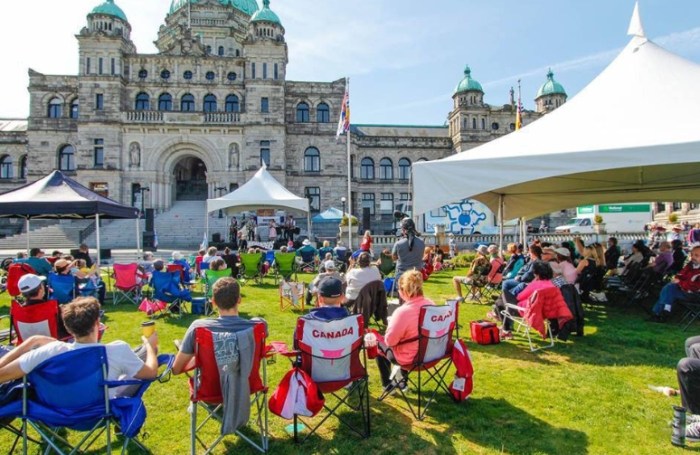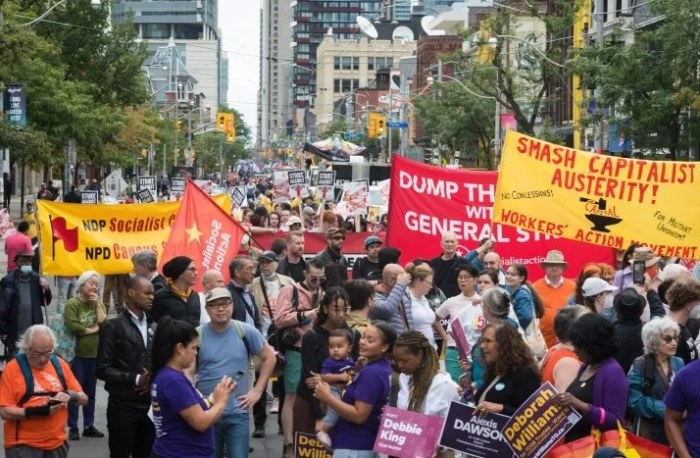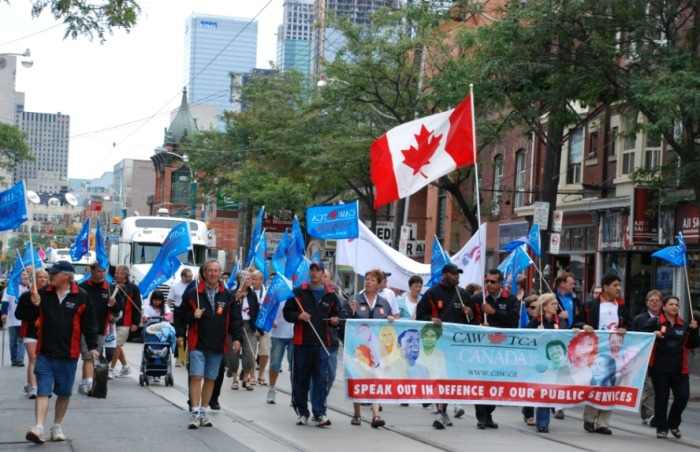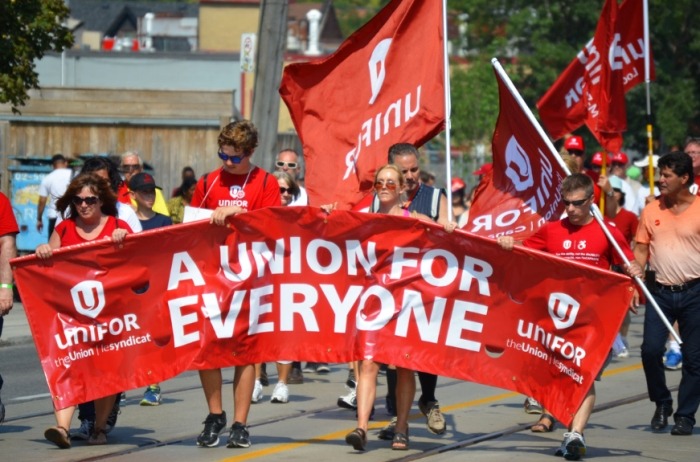Advertisements
Canada Labour Day 2025: Statutory Holiday Rules, Public Life, Activities & Historical Background
Wondering about Labour Day Canada? Discover the Canada Labour Day date, why it's a statutory holiday, public life impacts, traditions, and its historical background. Learn what people do on Canada Labor Day!
Table of contents
Hey there! If you're curious about Labour Day in Canada or just want to know what all the fuss is about, you're in the right place. As a proud Canadian who’s grown up celebrating this day every year, I can tell you it’s more than just a long weekend or a final summer send-off. It’s a day to recognize the hard work, sacrifices, and achievements of workers across the country.
Now, before I dive into all the fun and meaningful stuff, let me break it down for you in a way that’s easy to follow. We’ll start with the basics—like Canada Labour Day date, then move on to whether it's a Canada Labour Day statutory holiday, how it affects Canada Labour Day public life, what people actually do on What do people do on Canada Labour Day?, and finally, we’ll take a look at the canada labor day background that gave birth to this important occasion.
Canada Labour Day Date
When Is Labour Day Celebrated in Canada?
One of the most common questions I get is, “When is Canada Labour Day date?” Well, let me tell you—it’s always on the first Monday in September. That’s right, no matter where you are in Canada, from Vancouver to Halifax, Labour Day falls on the same day every year. It’s a long weekend that marks the unofficial end of summer and the beginning of the school year for many families.
This fixed Canada Labour Day date makes it easy to plan ahead. Whether you're heading out for a backyard barbecue, a camping trip, or just catching up with friends, you can count on having the Monday off. It’s one of those rare days where time seems to slow down a bit, and everyone gets a chance to relax before the hustle and bustle of fall kicks in.
Why the First Monday?
You might be wondering why the Canada Labour Day date was chosen as the first Monday in September. Well, back in the late 1800s, when the holiday was first being proposed, it was meant to be a day for workers to celebrate their contributions without interfering too much with the workweek. Holding it on a Monday allowed people to enjoy a long weekend without taking additional days off. It also gave organizers time to plan parades, picnics, and other community events.
The Canada Labour Day date was also chosen to avoid clashing with other holidays like the Fourth of July in the U.S. or May Day, which is celebrated in many other countries as a workers’ holiday. That’s why Canada Labour Day date is unique to us and different from other nations.
A National Tradition
Every year, people across Canada mark the Canada Labour Day date with a mix of celebration and reflection. While the festivities are fun, the underlying message is clear: Labour Day is about honoring the everyday workers who keep this country running. Whether it’s teachers, nurses, truck drivers, or factory workers, this day is for them.
Canada Labour Day Statutory Holiday
What Does It Mean to Be a Statutory Holiday?
When people ask me if Labour Day is a Canada Labour Day statutory holiday, I always say yes—but with a little asterisk. You see, while Labour Day is a federal holiday, its status as a Canada Labour Day statutory holiday can vary slightly depending on where you live. For example, in most provinces and territories, it’s a paid day off for many workers. But in places like Quebec, it’s treated a bit differently, especially in certain industries.
So, is Labour Day a Canada Labour Day statutory holiday across the board? The answer is mostly yes, but it’s not 100% uniform across the country. Each province has the authority to decide how it’s observed, which is why it’s always a good idea to check local regulations if you're planning time off.
The Origin of the Statutory Status
The idea of making Labour Day a Canada Labour Day statutory holiday came from the early labor movements. Workers in the 1800s were fighting for better conditions, fair wages, and reasonable hours. They wanted recognition for their efforts, and establishing a national holiday was a powerful way to do that.
Over time, as more and more people joined unions and advocated for their rights, governments started to acknowledge the importance of Labour Day. That’s how it became a Canada Labour Day statutory holiday in most parts of the country. It wasn’t just about giving people a day off—it was about showing respect for the working class.
How It Affects Work and Business
If you're wondering how being a Canada Labour Day statutory holiday affects daily life, the answer is: it depends. Many businesses, especially government offices, schools, and banks, are closed on Labour Day. Retail stores might stay open, but employees often get time-and-a-half or double pay for working on a Canada Labour Day statutory holiday.
For most Canadians, though, it’s a chance to unplug and enjoy time with family and friends. It’s one of those rare days where the hustle of daily life slows down, and people can truly appreciate the fruits of their labor.
Canada Labour Day Public Life
How Cities and Towns Celebrate
When Labour Day rolls around, Canada Labour Day public life takes on a whole new rhythm. Streets that are usually bustling with traffic become quieter, and public spaces fill up with people enjoying the long weekend. Parks are packed with families having picnics, and local festivals pop up in neighborhoods across the country.
One of the most noticeable things about Canada Labour Day public life is the sense of community. People come together to celebrate not just the end of summer, but also the contributions of workers in every industry. Parades are a big part of this—especially in cities like Toronto, Montreal, and Vancouver—where unions, community groups, and local leaders march to show solidarity and pride.
Public Transportation and Services
Now, if you're planning to get around during Canada Labour Day public life, you might want to check your local transit schedules. While some cities maintain regular service, others run on a holiday schedule. Buses and subways might run less frequently, and some routes might be temporarily altered.
Emergency services, of course, remain fully operational, and essential infrastructure like hospitals and police departments stay open. But if you're relying on public transit for daily commutes, it’s a good idea to plan ahead during Canada Labour Day public life.
Retail and Entertainment Venues
Another thing to note about Canada Labour Day public life is that many stores and entertainment venues are open, but with adjusted hours. Malls and big-box retailers often run special sales to take advantage of the long weekend, so if you’re in the market for back-to-school deals or summer clearance items, Labour Day weekend is a great time to shop.
Movie theaters, museums, and other attractions usually stay open too, though some might have limited hours or special events. It’s a good time to enjoy a movie, visit a local landmark, or just take a leisurely walk downtown and soak in the festive atmosphere of Canada Labour Day public life.
What Do People Do on Canada Labour Day?
Backyard BBQs and Family Gatherings
If you’re wondering What do people do on Canada Labour Day?, the answer is usually something delicious and outdoorsy. One of the most popular activities is hosting or attending a backyard barbecue. With the weather still warm in September, it’s the perfect time for burgers, hot dogs, and cold drinks.
Families often use this time to reconnect before the busy school year starts. Kids are still on summer break for a little while longer, so it’s a chance to make the most of those final days of freedom. Whether it’s playing lawn games, grilling up some food, or just sitting around chatting, What do people do on Canada Labour Day? often revolves around simple pleasures and quality time.
Outdoor Adventures and Day Trips
Another common answer to What do people do on Canada Labour Day? is hitting the road for a quick getaway. Labour Day weekend is one of the last opportunities to enjoy nature before the leaves start changing and the temperatures drop.
Camping, hiking, canoeing, and even just a scenic drive through the countryside are all popular options. National and provincial parks often see an increase in visitors during this time, and many people take advantage of the long weekend to explore local trails, beaches, and lakes.
Festivals, Parades, and Community Events
Of course, What do people do on Canada Labour Day? isn’t just about relaxing—it’s also about celebrating. Cities and towns across Canada host parades, concerts, and community festivals that bring people together. These events often feature marching bands, floats, and displays from local unions and organizations.
In bigger cities, you might find live music performances, food vendors, and even fireworks. It’s a vibrant and colorful way to mark the occasion and remind everyone of the importance of workers in shaping the country.
Canada Labor Day Background
The Roots of Labour Day in Canada
If you’re curious about the canada labor day background, you’ll find it’s deeply tied to the history of workers’ rights in the 19th century. Back in the 1800s, labor conditions were tough. People worked long hours for low wages, often in unsafe environments. The idea of a day dedicated to workers came from early labor unions who wanted to highlight the need for better working conditions and fair treatment.
One of the key moments in the canada labor day background was the 1872 Toronto printers’ strike. Workers demanded a nine-hour workday, which was a huge deal at the time. Their cause gained widespread support, and even though they didn’t win immediately, it sparked a national conversation about workers’ rights. That’s how the canada labor day background started gaining momentum.
The Movement Grows
As the labor movement gained strength, more strikes and protests took place across Canada. Workers from all kinds of industries—from railways to factories—joined together to demand change. These efforts were crucial in shaping the canada labor day background, as they showed the power of collective action.
Eventually, in 1894, Prime Minister John Thompson declared the first official Labour Day holiday. This was a major milestone in the canada labor day background, as it recognized the importance of workers and gave them a day to celebrate their contributions. It was more than just a holiday—it was a symbol of progress and solidarity.
Why It Still Matters Today
The canada labor day background may be rooted in the past, but its legacy lives on. Today, Labour Day is still a time to honor workers and reflect on how far we’ve come. It’s also a reminder that the fight for fair wages, safe working conditions, and workers’ rights is ongoing.
Whether you’re a teacher, a nurse, a construction worker, or a student, Labour Day is a chance to appreciate the efforts of everyone who helps keep Canada running. And that’s what makes the canada labor day background so important—it’s not just history, it’s part of who we are today.
Frequently Asked Questions
What Is the Holiday on May 1 in Canada?
While many countries celebrate International Workers’ Day on May 1, in Canada, that’s not our Labour Day. Instead, we observe Labour Day on the first Monday in September. The canada labor day background is different from May Day, which has its own historical and political roots. So, if you're wondering What is the holiday on May 1 in Canada?, the answer is that it’s not officially recognized as a public holiday in most provinces.
Why Is Labour Day Celebrated in Canada?
Labour Day in Canada is celebrated to honor the contributions of workers to the country’s economic and social development. It’s a day to recognize the efforts of everyone from factory workers to office employees, and it’s deeply tied to the canada labor day background of labor rights movements in the 19th century.
Is Labour Day the Same in Canada and the U.S.?
Although both Canada and the United States celebrate Labour Day, they do so on different dates. In the U.S., it’s held on the first Monday in September as well, so it’s actually the same Canada Labour Day date and U.S. Labour Day date. However, the historical context and some traditions differ between the two countries.
Is Labor Day a Holiday for Canada?
Yes, Labour Day is a recognized Canada Labour Day statutory holiday in most provinces and territories. While the specifics can vary slightly, it’s widely observed as a day off for many workers. So, if you’re asking, Is Labor Day a holiday for Canada?, the answer is a resounding yes—it’s a time for celebration, relaxation, and reflection on the value of labor in our society.
Leave a Message